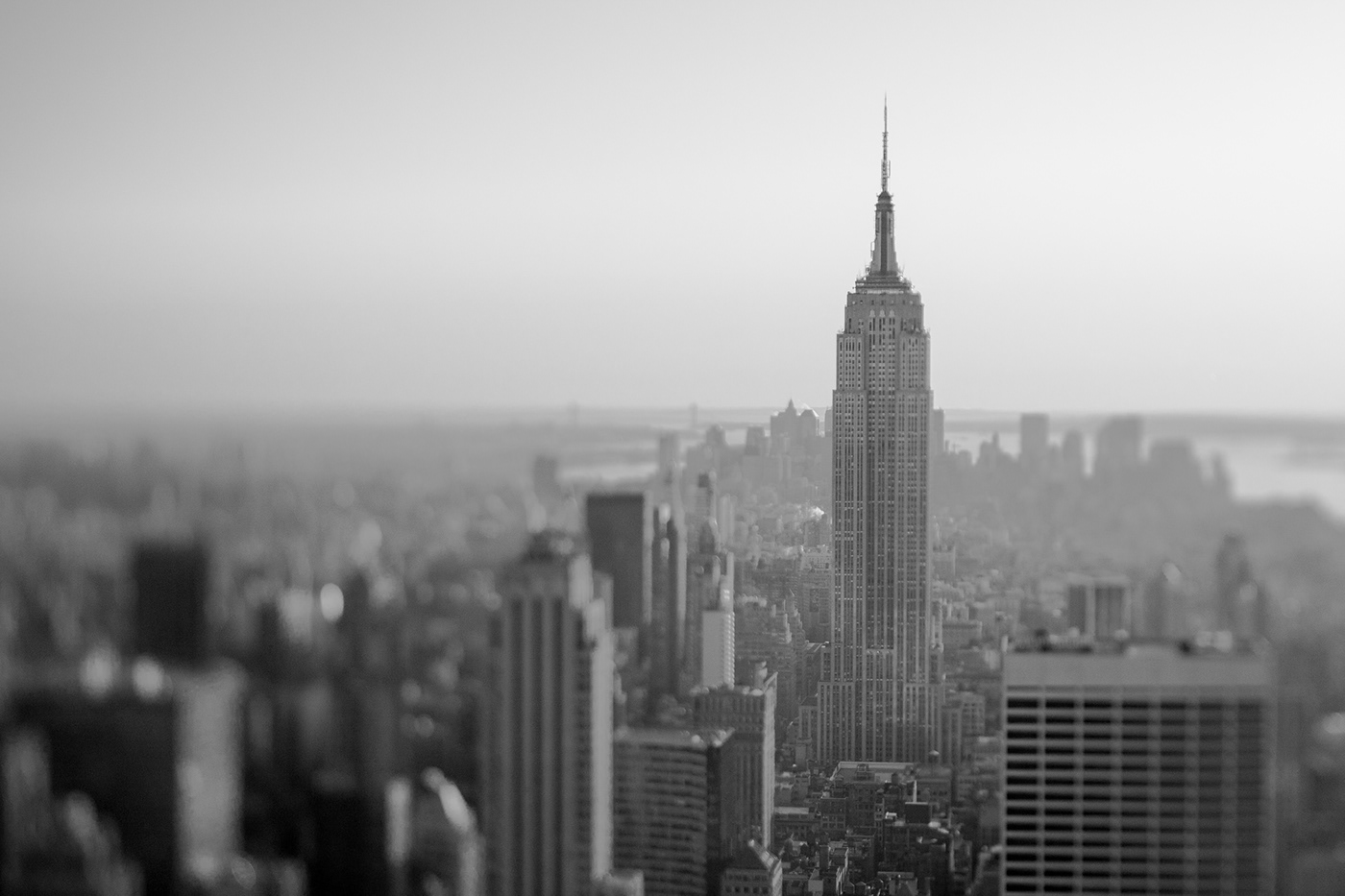
The Empire State Building in New York City as viewed from the top of the Rockefeller Center Building.
Taken with a Tilt/Shift lens in order to control the depth of field.

The view down Park Avenue (formerly '4th Avenue') in New York City, in the rain. Lights from the traffic on Park Ave reflect on the wet road.
Said to have originally been called Park Avenue because the railroad sunk tracks into an open cut down part of the avenue which were then covered with grates and grass - the 'Park'.

Traffic approaches the Queensboro Bridge (59th St Bridge) on the east side of Manhattan.
Taken from the Roosevelt Island Tramway - the only commuter aerial tramway in north America.
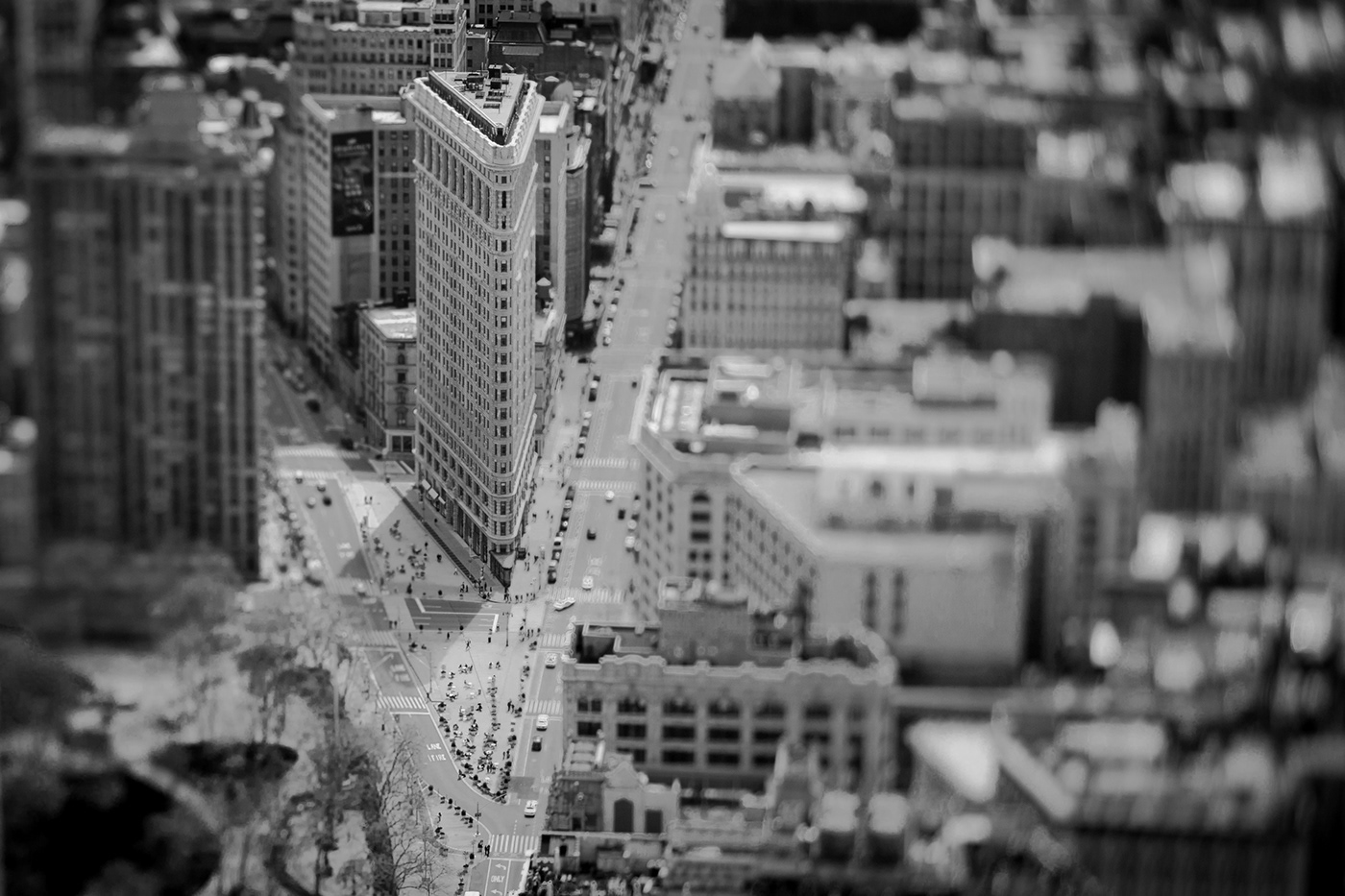
The Flatiron building in New York City as viewed from the top of the Empire State building.
Officially called the 'Fuller Building', locals apparantly placed bets on how far debris would spread when the wind knocked it down (when it was first built).
The value of the 22 storey building is about $190 million, and that it's already zoned by the city to allow it to become a hotel.
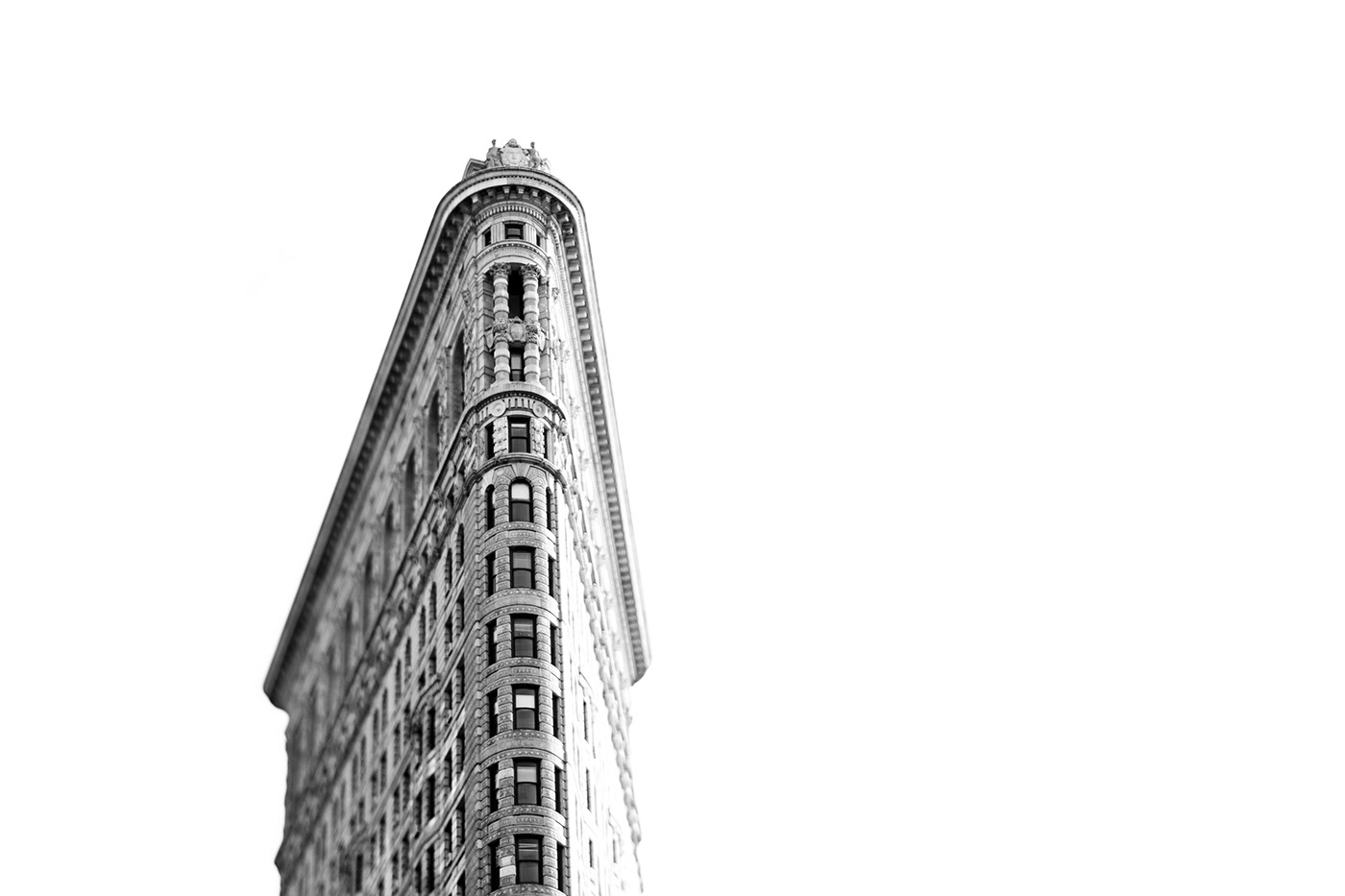
Peak, plow or bow of an ocean liner. All words which have been used to describe the Flatiron building in New York City.
The triangular pose was designed by Daniel Burnham to fit into the awkward shaped space between Broadway and 5th Avenue. (Black and White, No Vignette)
The triangular pose was designed by Daniel Burnham to fit into the awkward shaped space between Broadway and 5th Avenue. (Black and White, No Vignette)
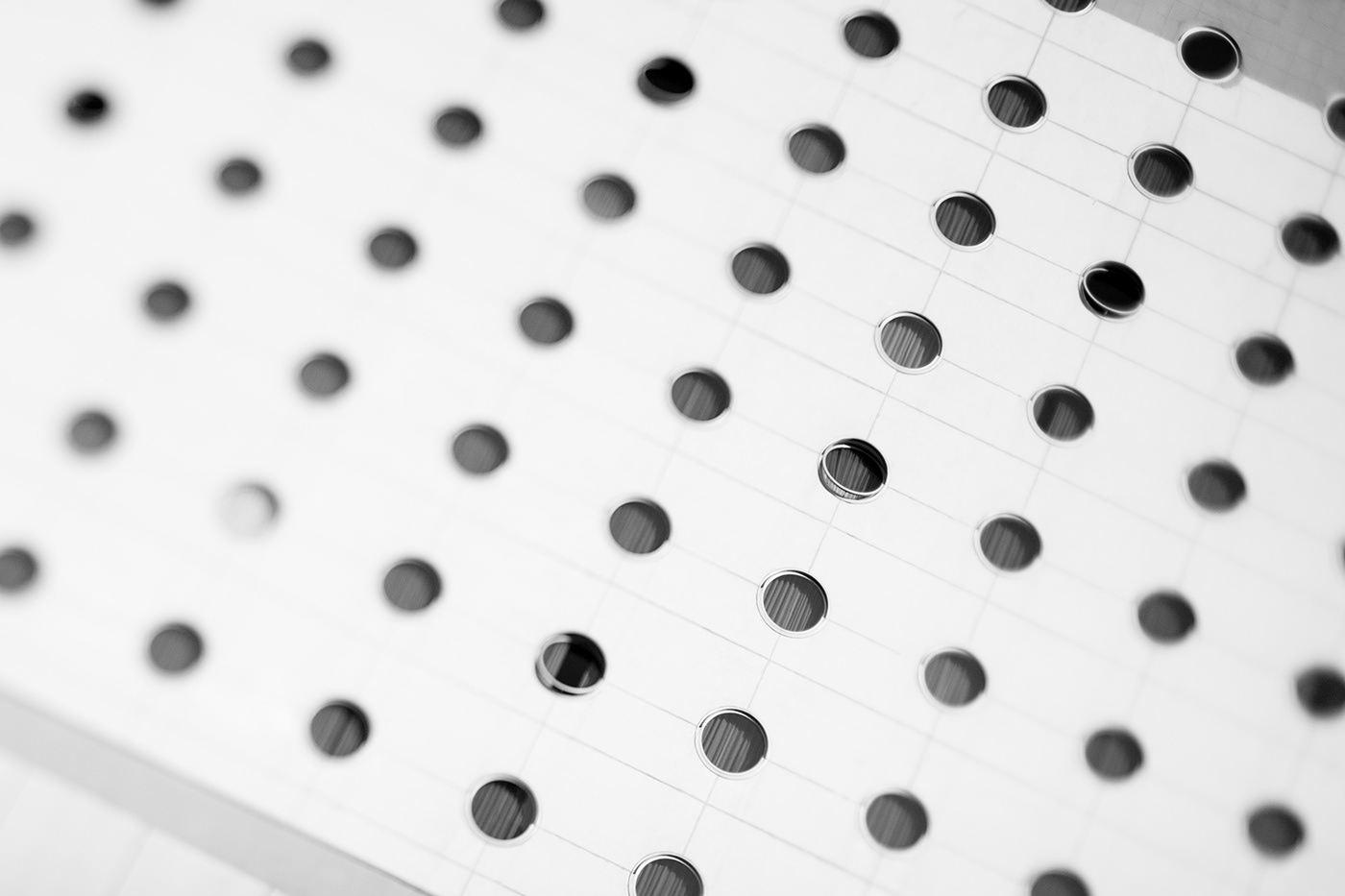
The Port Hole styled windows in the Maritime Hotel in New York City.
Located in Chelsea, this was once the headquarters for the National Maritime union. Each window is 5 ft - 1 per room.
Located in Chelsea, this was once the headquarters for the National Maritime union. Each window is 5 ft - 1 per room.

New York's Central Park seen from the 'Top of the Rock' on the roof of the Rockefeller Center.
Sheep Meadow was actually used for sheep grazing from the 1860s to 1934, after which people worried that New Yorkers were eyeing them up for food during the depression, so they were moved up-state.
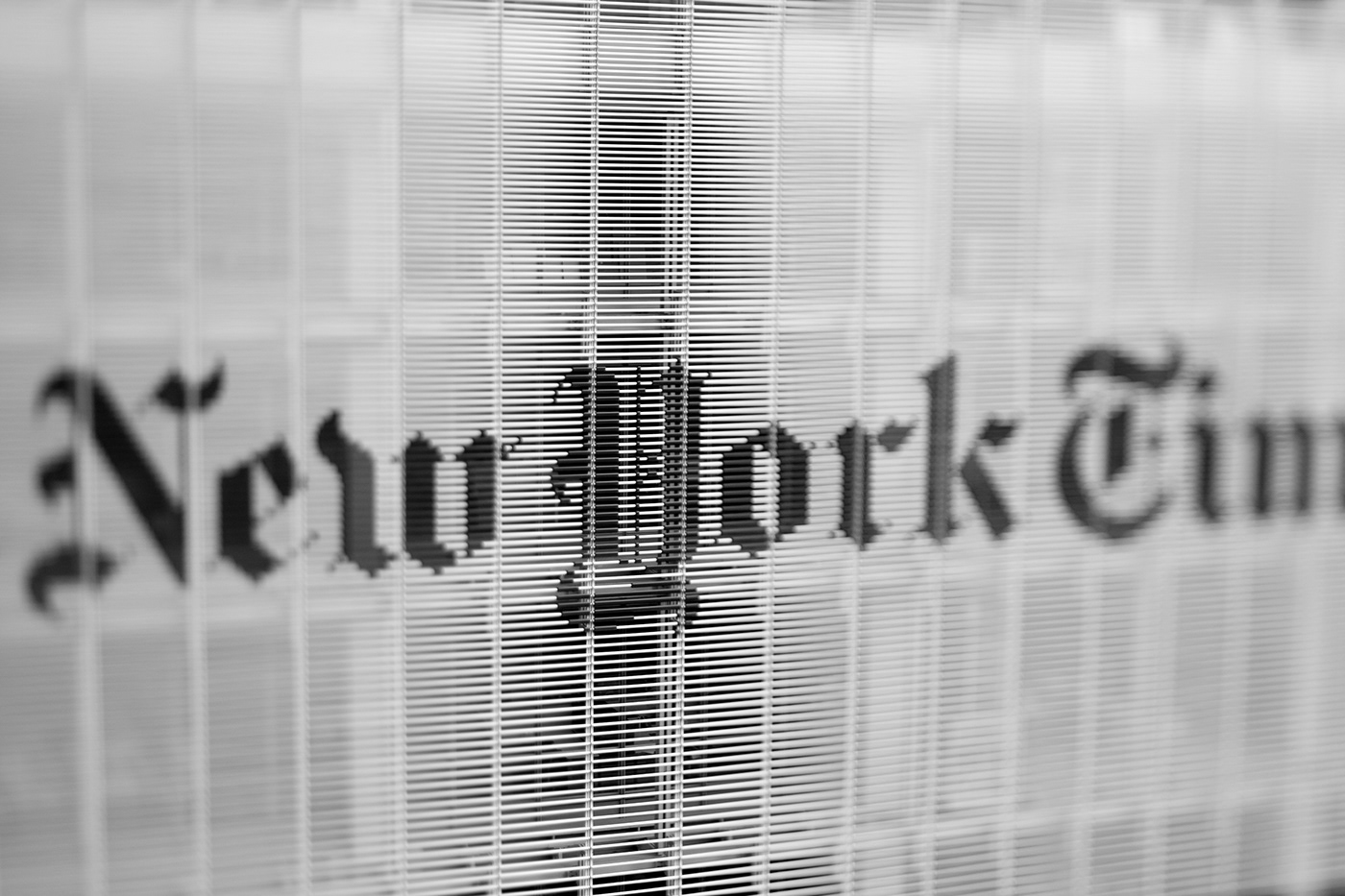
Completed in 2007, the New York Times building in the Times Square area of New York is 52 floors tall and 1,142 feet tall including the antenna.
The building is shrouded in distinctive horizontal ceramic rods on all sides except for the North side, which help to keep the building cool during the summer months but also let as much natural light in as possible.
It was also these rods that made it easier for Alain Robert to climb up to the roof of the building on the outside, during the summer of 2008 (June 5th).
The building is shrouded in distinctive horizontal ceramic rods on all sides except for the North side, which help to keep the building cool during the summer months but also let as much natural light in as possible.
It was also these rods that made it easier for Alain Robert to climb up to the roof of the building on the outside, during the summer of 2008 (June 5th).

The Empire State Building in New York, taken from the 'top of the Rock' Observation deck.
The photo was taken during 'Earth Hour' 2009, where several famous buildings around the world switch off their lights. In this case, the coloured illuminations at the top of the building are switched off, while a good many people are still at work in the offices below.
The photo was taken during 'Earth Hour' 2009, where several famous buildings around the world switch off their lights. In this case, the coloured illuminations at the top of the building are switched off, while a good many people are still at work in the offices below.

The IAC building designed by Frank Gehry in New York.
Out of 1,437 glass panels on the 'curtain wall' - 1,349 of them are unique in their shape and degree of twist. The 'sugar coated' look comes from the baked on ceramic dot patterns on the glass.

A blimp passes overhead, reflected in the Hearst Tower in New York City.
The tower was designed by Norman Foster and is nearly 600 ft tall. The framing pattern (similar to the Swiss Re Tower / The Gherkin in London) saves about 20% less steel compared to a building with a conventional steel frame design.
The tower was designed by Norman Foster and is nearly 600 ft tall. The framing pattern (similar to the Swiss Re Tower / The Gherkin in London) saves about 20% less steel compared to a building with a conventional steel frame design.
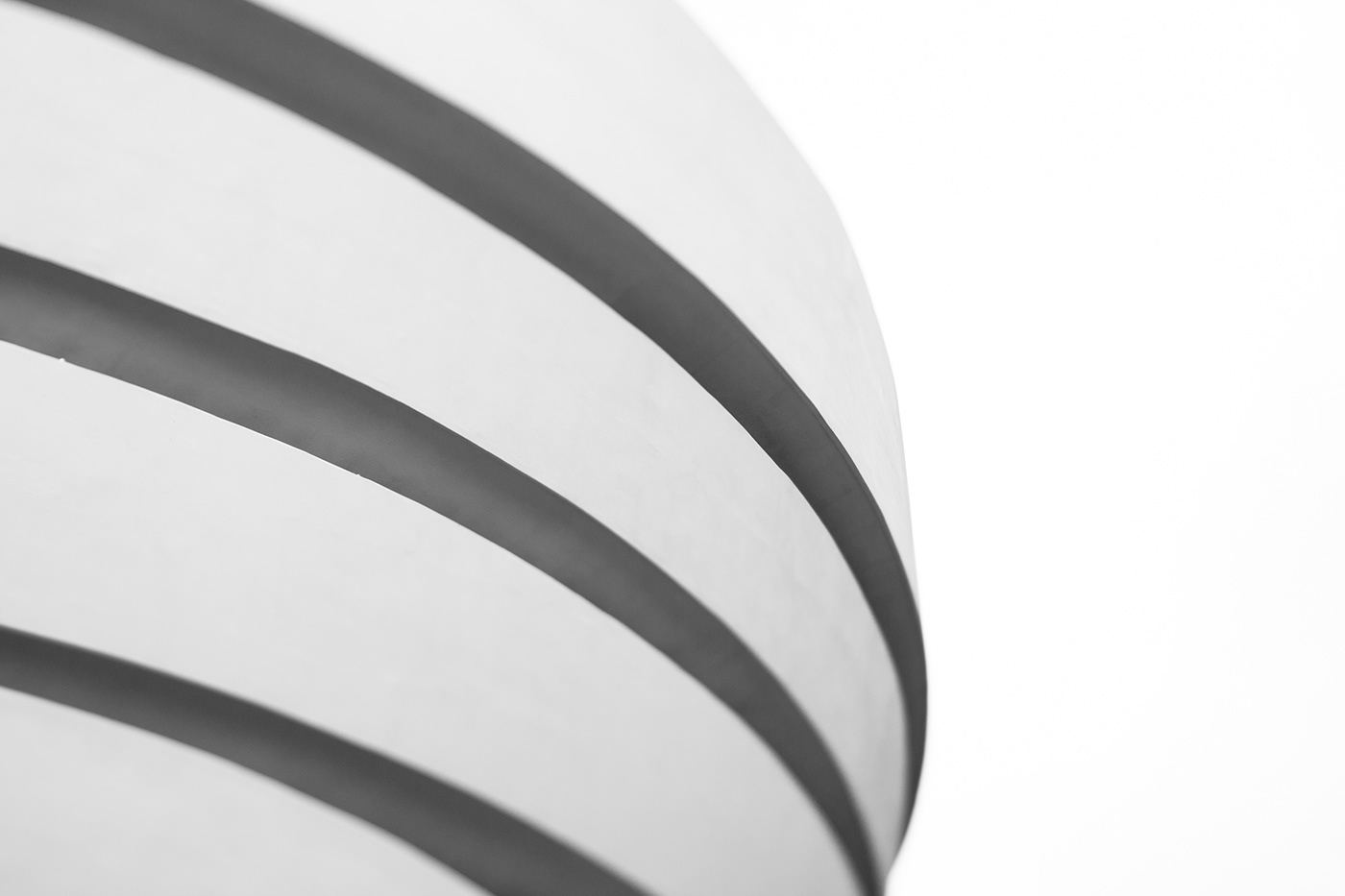
Opening its doors in October 1959, it's full name is the Solomon R. Guggenheim Museum.
Designed by Frank Lloyd Wright, the museum is instantly recognisable on the Upper East Side in New York City.
Designed by Frank Lloyd Wright, the museum is instantly recognisable on the Upper East Side in New York City.

